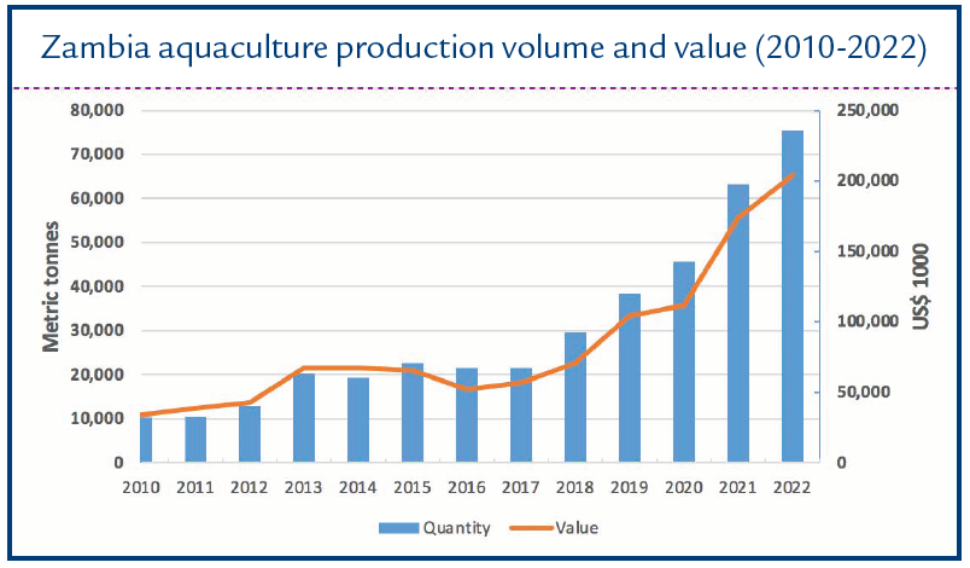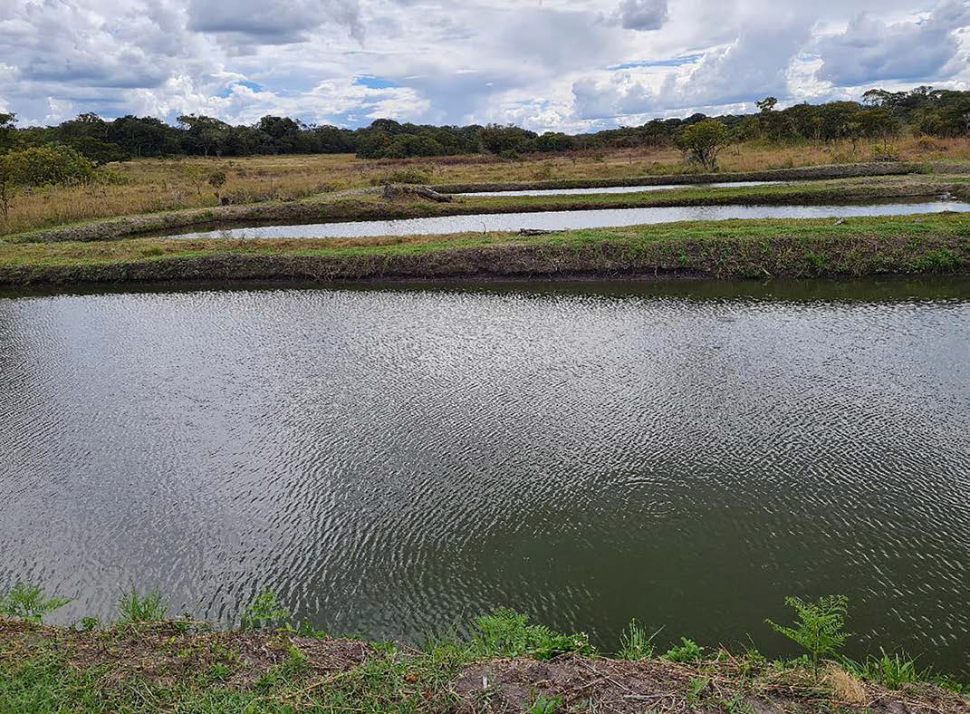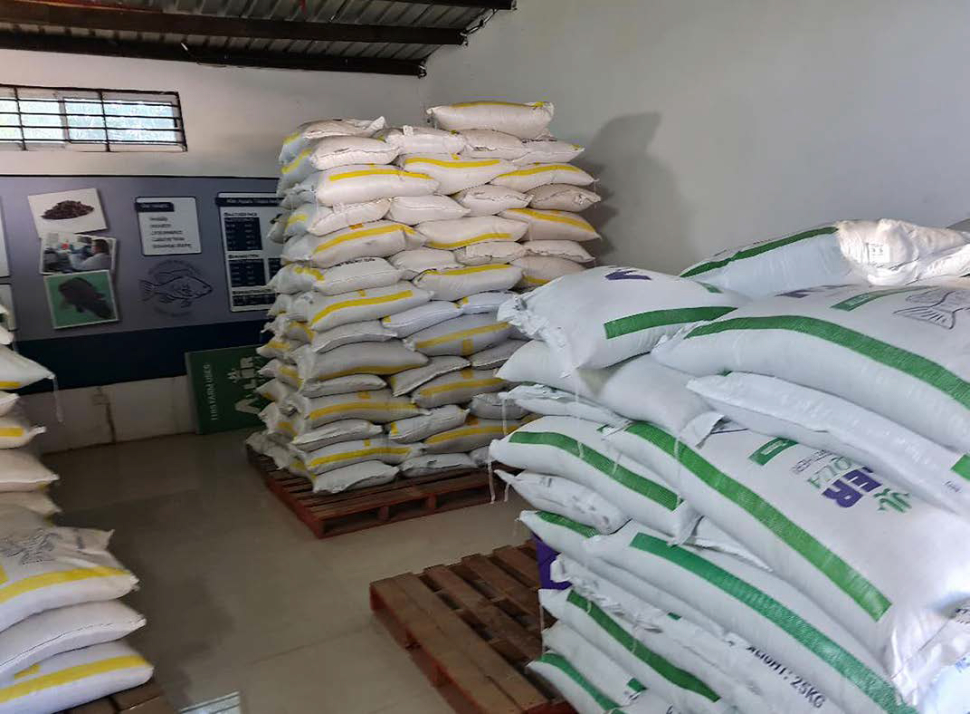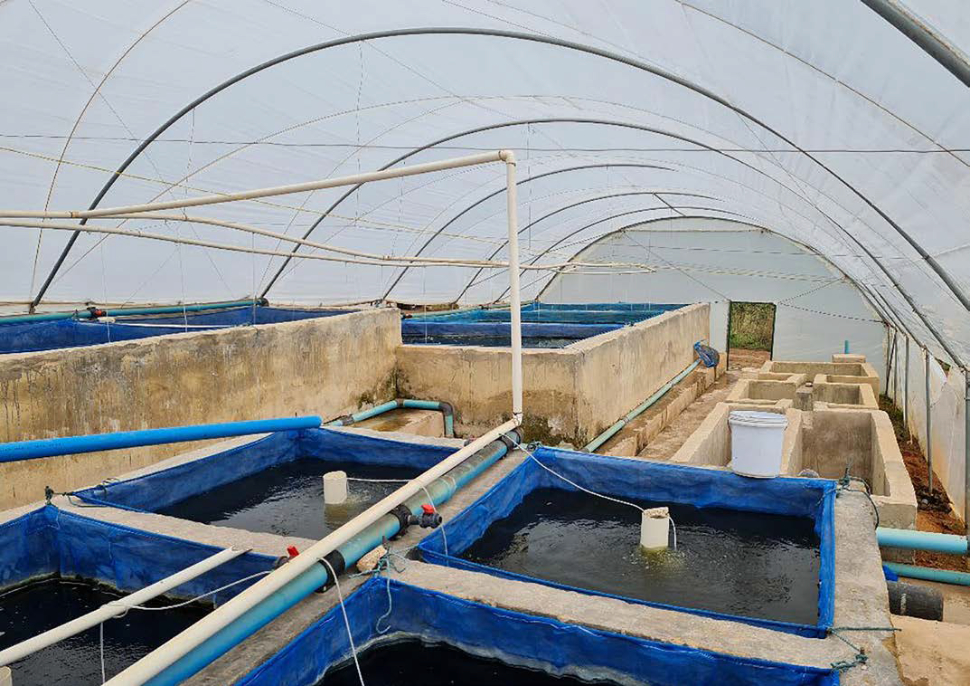
Fish cages near Siavonga, Zambia. The country is endowed with 23 million hectares of water and wetlands.

Lake Kariba is the world’s largest reservoir by volume, and it is well suited for fish culture
Located in the central part of Southern Africa, Zambia is landlocked and surrounded by eight countries: Angola, Botswana, Democratic Republic of Congo (DRC), Malawi, Mozambique, Namibia, Tanzania and Zimbabwe. Zambia will be hosting the second Aquaculture Africa conference (AFRAQ23) for the African Chapter of the World Aquaculture Society, from the 13th to 16th November 2023. The conference will be held at the Mulungushi International Conference Centre (MICC) in Lusaka under the theme: Resilient Value Chains in the Blue Economy.

Growth of aquaculture in Zambia (Source: FAO and Ministry of Fisheries and Livestock). The country is one of the fastest growing aquaculture producers in Africa, producing mainly tilapia.
It is estimated that out of Zambia’s total land area of 75 million hectares or 752,000 km2, 58% (42 million hectares) is classified as medium- to high potential for agricultural production. The country receives between 800 and 1,400 mm of rainfall annually. It is suitable for the production of a broad range of crops, fish and livestock. Zambia is endowed with a total of 23 million hectares of water and wetlands, with more than 400 indigenous fish species. These natural resources, coupled with favorable climatic conditions, are being utilized for inland aquaculture development. According to the African Development Bank, Zambia is one of the countries in Africa with high potential to expand agriculture, livestock and fisheries (including aquaculture), given the vast land, labor and water resources available.
Zambian aquaculture is documented to have begun in the 1940s when indigenous cichlid species were introduced in dams and earthen ponds, mainly after the construction of six fish ponds in 1943 at Chilanga Fish Farm located 15 km south of the capital Lusaka. Chilanga still remains an important historical site for fisheries and aquaculture and it is where the Headquarters of the Department of Fisheries is based. Later, in the 1950s the government established a fish farm in Northern Zambia (the National Aquaculture Research and Development Centre) at Mwekera which is 25 km East of Kitwe, the third largest city in Zambia. This was done in order to demonstrate fish farming ventures and supplement the experiments that were being conducted at Chilanga. Today, the center remains the largest aquaculture research institution in Zambia.

Typical earthen ponds used to produce various species in Zambia and the surrounding region.

Commercial feeds are available for various species and life stages, and Zambia is now a net exporter of fish feeds.
At that time, the emphasis was subsistence farming as opposed to viewing aquaculture as a business. This contributed to the stagnation of aquaculture for more than twenty years (1966 – 1986). Furthermore, the policies at the time did not help matters since they favored capture fisheries, as these activities involved more people. Fish supplies from the wild were deemed adequate for the population. The policy ignored the fact that fish farming could overcome the low supply of fish from natural water bodies as the human population grew.
As population growth put pressure on wild stocks, the government established fingerling production centers across the country to try and stimulate fish farming. A total of nineteen fish farms were established in all ten Provinces. Government, working with development partners, supported the promotion of fish farming for food and nutrition security, especially in rural areas. Aquaculture parks are currently being established as a mechanism to stimulate investments in the sector.

Market-driven growth of the commercial hatchery sector continues to fuel industry expansion.
Realizing that the government was not good at business, a market model was adopted, thus bringing in the private sector in setting up aquaculture infrastructure. Market-driven commercial aquaculture development built on a foundation of aquaculture infrastructure developed through interventionist programs (investments by government in human and institutional capacity such as research stations and public fish hatcheries). The main rationale for this model is that the private sector can provide better services than the traditional public sector in response to the market. This model has seen the establishment of several fish hatcheries and fish feed production facilities across the country, with a number of fish farms being established through private sector participation. Successive governments have been contextual and fl exible in meeting the people’s demands, and appropriate and suitable policies have been made on the course. Zambia just launched the Fisheries and Aquaculture Policy, and its Implementation Plan (2022 – 2026) to guide its developmental trajectory.
Over the years, the industry has grown due to both strong public and private participation, utilizing both land-based (earthen ponds) and water-based (cages) production, from subsistence farming to intensive aquaculture systems. It is also common now to find backyard aquaculture facilities such as fish ponds and fish tanks. The support infrastructure of fish feed suppliers has also grown, making Zambia a hub for fish feed production in the region. Zambia is now a net exporter of fish feeds.
Currently, Zambia has become the sixth highest producer of farmed fish in Africa behind only Egypt, Nigeria, Ghana, Uganda and the United Republic of Tanzania. The value chain approach to aquaculture production looks promising for the future, as all nodes within the chain should grow in tandem. The country is also the largest producer of tilapia in Southern Africa, increasing from as low as 750 tons annually in 1986 to 75,500 tons in 2022. This growth is supported on the basis that wild capture fisheries are failing to meet the food needs of the people. Fish is so important in the diets of Zambians; it is estimated that 53% of the animal protein consumed comes from fish.

Following the lead of other countries, pond liners are now available and utilized for soils with limited clay content.

Zambia is the largest producer of tilapia in the region, increasing from 750 tons in 1986 to 75,500 tons in 2022.
Despite this positive trajectory, the domestic fish requirement is expected to exceed 300,000 tons by the year 2025 based on World Health Organization fish consumption recommendations. In spite of the domestic demand, aquacultural products are being exported from Zambia to neighboring countries, signaling the huge market potential for fish. It is also common to find small- and medium enterprises, especially those employing women, adding value through processing for longer shelf-life and market requirements. This implies that continuous investment in the aquaculture value chain should remain high on the agenda. In light of these facts and trends, it is not surprising that Zambia was identified as a suitable destination for the Aquaculture Africa 2023 Conference. The Conference will provide a platform to share experiences and possible solutions to impediments, at both domestic and global stages for the growth of the aquaculture industry.
Source link : https://www.was.org/article/Evolution-of-Aquaculture-Value-Chain-Development-in%20Zambia-Approaching-a-Century-of-Demonstrated-Resilience.aspx
Author :
Publish date : 2023-09-15 07:00:00
Copyright for syndicated content belongs to the linked Source.





